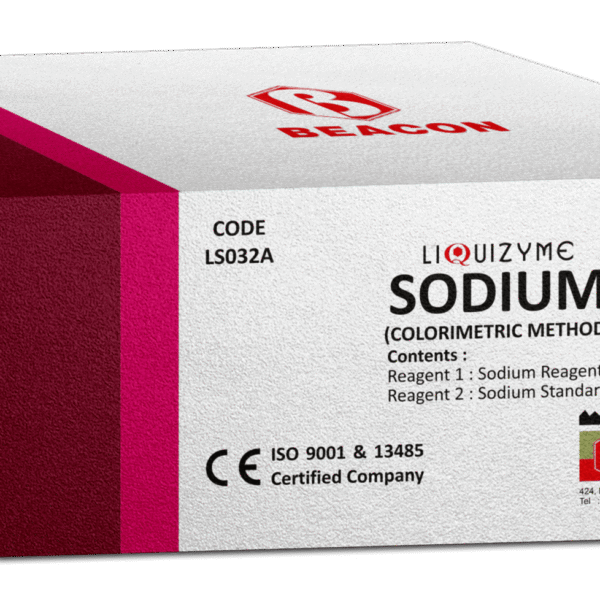Sodium Reagents
1. Ion-Selective Electrode (ISE) Method
Most modern chemistry analyzers use ISE for sodium.
Reagents include:
-
Reference solution / Internal standard
-
Electrolyte solution for electrode stability
-
Conditioning solution
-
Cleaning solution
-
Calibration solutions (Low & High Na⁺ standards)
Principle:
The sodium ISE membrane selectively binds Na⁺ ions, generating an electrical potential proportional to sodium concentration. Calibration solutions are crucial for accuracy.
2. Flame Photometry Method
Older or standalone electrolyte analyzers may use flame photometry.
Reagents include:
-
Diluent
-
Standard sodium solution
-
Internal lithium standard (in some systems)
-
Cleaning solutions
Principle:
Sodium emits light at a characteristic wavelength (589 nm) when introduced into a flame. The emitted intensity is proportional to concentration.
3. Colorimetric (Photometric) Method
Used in some semi-automatic chemistry analyzers when ISE is not available.
Reagents include:
-
Ionophore-based chromogenic reagents
-
Buffer solution
-
Color-forming indicator dye
-
Stabilizers and preservatives
Principle:
Sodium ions react with a specific ionophore dye to produce a measurable color change.
Reagent Format
Sodium reagent kits may include:
-
Single bottle (for colorimetric systems)
-
Multi-solution packs (ISE systems)
-
Standards in sealed ampoules or bottles
-
Ready-to-use liquid formulations
Sample Types
-
Serum
-
Plasma
-
Urine (diluted appropriately)
-
Whole blood (in ISE blood gas analyzers)
KSh5,000.00 Original price was: KSh5,000.00.KSh3,800.00Current price is: KSh3,800.00.





